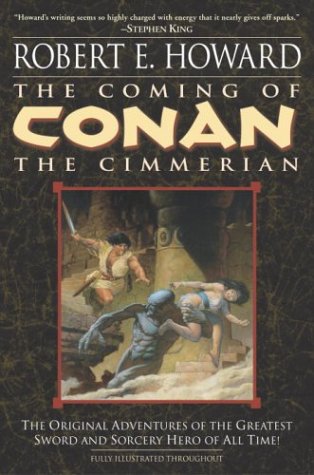Reading Moby-Dick: Part Two
5 Questions About: Dracula
Fiction: Casualty Clearing Station
5 Questions About: Modern Poetry
Reading Moby-Dick: Part One
Ha! Ha! Ha! -- Saturday Night Live's Funniest Come...
5 Questions About: Modern Humor
Less Than Good: Bret Easton Ellis
5 Questions About: Harry Bliss
Literary Criticism
Fantastically Bad Cinema
Essays
Under God's Right Arm
June 2006
July 2006
August 2006
September 2006
October 2006
November 2006
December 2006
January 2007
February 2007
March 2007
April 2007
May 2007
June 2007
July 2007
August 2007
September 2007
October 2007
November 2007
December 2007
January 2008
February 2008
March 2008
April 2008
May 2008
June 2008
July 2008
August 2008
September 2008
October 2008
November 2008
December 2008
January 2009
February 2009
March 2009
Alcoholic Poet
Baby Got Books
Beaman's World
BiblioAddict
Biblio Brat
Bill Crider's Pop Cultural Magazine
The Bleeding Tree
Blog Cabins: Movie Reviews
A Book Blogger's Diary
BookClover
Bookgasm
Bookgirl's Nightstand
Books I Done Read
Book Stack
The Book Trib
Cold Hard Football Facts
Creator of Circumstance
D-Movie Critic
The Dark Phantom Review
The Dark Sublime
Darque Reviews
Dave's Movie Reviews
Dane of War
David H. Schleicher
Devourer of Books
A Dribble of Ink
The Drunken Severed Head
Editorial Ass
Emerging Emma
Enter the Octopus
Fatally Yours
Flickhead
The Genre Files
The Gravel Pit
Gravetapping
Hello! Yoshi
HighTalk
Highway 62
The Horrors Of It All
In No Particular Order
It's A Blog Eat Blog World
Killer Kittens From Beyond the Grave
The Lair of the Evil DM
Loose Leafs From a Commonplace
Lost in the Frame
Little Black Duck
Madam Miaow Says
McSweeney's
Metaxucafe
Mike Snider on Poetry
The Millions
Moon in the Gutter
New Movie Cynics Reviews
Naked Without Books
A Newbie's Guide to Publishing
New & Improved Ed Gorman
9 to 5 Poet
No Smoking in the Skull Cave
Orpheus Sings the Guitar Electric
Polly Frost's Blog
Pop Sensation
Raincoaster
R.A. Salvatore
Reading is My Superpower
Richard Gibson
SciFi Chick
She Is Too Fond Of Books
The Short Review
Small Crimes
So Many Books
The Soulless Machine Review
Sunset Gun
That Shakesperherian Rag
Thorne's World
The Toasted Scrimitar
This Distracted Globe
Tomb It May Concern
2 Blowhards
Under God's Right Arm
A Variety of Words
The Vault of Horrr
Ward 6
When the Dead Walk the Earth
The World in the Satin Bag
Zoe's Fantasy
Zombo's Closet of Horror
Bookaholic Blogring
Power By Ringsurf

Chapter Three: There She Blows!
“So be cheery, my lads, let your hearts never fail,
While the bold harpooner striking the whale!”
-
One can only imagine the pain and agony of being cornered at a cocktail party by Herman Melville. How in the world would you get him to shut-up? Would he spend the next 30 minutes droning on about whale line? Would his tips about how to properly cook whale blubber stretch into the wee hours? Oh, my god, is he going to talk about the different kinds of whales – again?
The answer was probably yes.
There’s little doubt that one of the great challenges of reading “Moby-Dick” is Melville’s tendency towards long-winded sermons about whaling. Every agonizing detail is described in all its glory. These temporary sidetracks to the story often don’t feel very temporary.
In fact, I groaned audibly when I came upon the dreaded “Cetology” chapter on page 169.
In my other two failed attempts at reading “Moby-Dick,” Cetology was the beginning of the end. The chapter is 14 pages long, but feels like 30 pages. This is the first chapter where Melville takes a break from his characters and narrative – to lecture.
Cetology is about whales. Every different type of whale under the ocean – from Right Whales to dolphins. The chapter is divided into three books called:
I. The Folio Whale
II. The Octavo Whale
III. The Duodecimo Whale
The urge to skip this section is powerful – especially when your eyes begin to glaze over and you find your mind wandering to more satisfying endeavors like washing dishes or shoveling snow. Halfway through it this time – I felt a strong desire to vacuum the living room rug.
Agony, dreadful agony.
It is chapters like Cetology that lead the New York United States Magazine and Democratic Review to write in 1852:
“…If there are any of our readers who wish to find examples of bad rhetoric, involved syntax, stilled sentiment and incoherent English, we will take the liberty of recommending to them [Moby-Dick]…”
That’s, of course, unfair.
There are passages of writing in Melville’s masterpiece so breathtaking – so magical – that a reader is forced to double back and read it again. The writing in these passages is that profound – that good.
Melville was writing an epic – a narrative of remarkable scope and imagination. Part of his goal was to build a world so real that he felt it necessary to describe every iota of it. That’s why we get the constant explaining.
Modern readers don’t need this type of exposition (it’s especially annoying because much of Melville’s information on whales is wrong. We’ve learned quite a lot of whales since the mid-19th century).
Patience is the key. A modern reader must make these narrative lectures part of the story – part of the experience. Go slowly and absorb them. Put the misinformation into the context of the time and the story.
Soldier on.
It’s worth it and makes the magical moments even more magical.
Progress to date: Page 245 of 655.
 StumbleUpon |
StumbleUpon |
 del.icio.us |
del.icio.us |
 Technorati |
Technorati |

This work is licensed under a Creative Commons Attribution-No Derivative Works 3.0 License.
The Template is generated via PsycHo and is Licensed.




